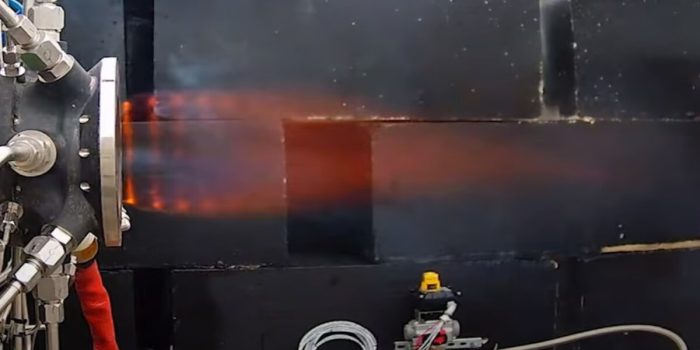Venus Aerospace, working with DARPA, has reached an important step in creating a Rotating Detonation Rocket Engine (RDRE). This new engine is a big change from the old-style chemical rockets that have been used since the 1940s. While those rockets have been good for getting us into space, they have some problems and can be dangerous. That’s why scientists have been looking for better ways to power spacecraft.
RDREs operate on a different principle, leveraging controlled explosions to sustain a detonation wave without requiring moving parts. Unlike conventional rockets that utilize a combustion chamber, RDREs feature two coaxial cylinders with a gap between them, into which a fuel/oxidizer mixture is injected and ignited. This setup generates a shock wave that travels at supersonic velocity, producing increased heat and pressure.
The challenge lies in sustaining the burn, a feat achieved by Venus Aerospace through the introduction of a cooling system to prevent engine meltdown during testing. This breakthrough opens the door to enhanced efficiency, with potential increases of at least 15 percent over traditional rockets.
Moreover, RDREs offer several advantages, including the ability to use safer liquid propellants, faster load times, and avoidance of fuel boil-off common with cryogenic fuels.
NASA has already demonstrated the viability of RDREs for powering a Moon lander, while Venus Aerospace’s recent achievement of a sustained burn suitable for a hypersonic missile showcases the engine’s versatility and potential applications. This progress marks a significant step toward high-speed global flight, a goal championed by Venus Aerospace.

Andrew Duggleby, CTO and co-founder of Venus Aerospace, expressed pride in the team’s accomplishments, highlighting the importance of this technical milestone in realizing their vision of transformative technology.
As RDREs continue to evolve, they hold the promise of revolutionizing space travel and propulsion systems, offering safer, more efficient alternatives to conventional rockets.
“As we continue to push towards our ultimate mission of high-speed global flight, this is an important technical milestone for having a flight-ready engine,” said Andrew Duggleby, CTO and co-founder of Venus Aerospace. “I’m incredibly proud of our team as they continue to push forward on this world-changing technology.”


